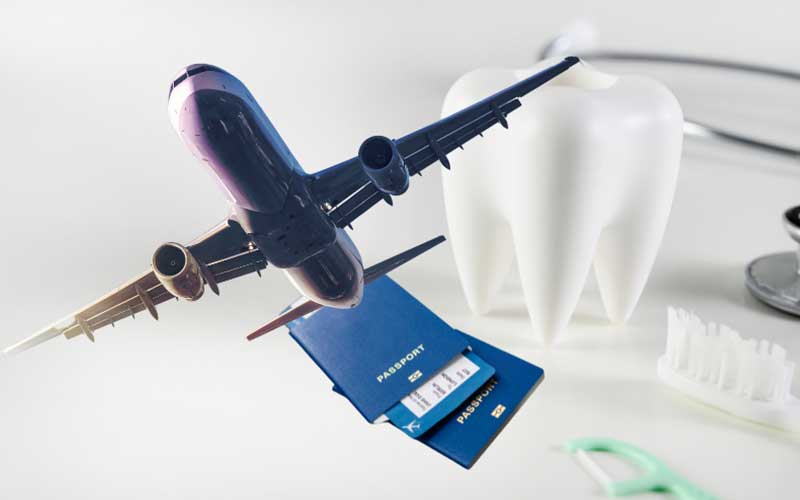Contents
Loose tooth: Treatments, causes, and prevention
What is tooth loss?
Tooth loss is the process of a tooth becoming loose and then falling out. A common example of tooth loss is when baby teeth are replaced by permanent teeth. Baby teeth will gradually loosen and then fall out, making room for the new teeth to erupt. This is natural and harmless. However, other cases of tooth loss are certainly not a natural process of the human body and will cause many problems.
According to scientific research, tooth loss is more common for people who are 35 years old or older. Men are also more likely to experience tooth loss than women. Moreover, it seems that there is a link between the patients’ smoking habit and their tooth loss conditions.

Why does tooth loss happen?
Gum disease
Gum disease is the leading factor that causes tooth loss. When the gum is affected by inflammation and infection of bacteria, the tooth roots will also be affected and destroyed. Thus, the tooth gets loose and finally falls out.
Gum disease is a common health problem for adults. Although it can be the cause of many other health problems, gum disease is actually curable. Therefore, it is desirable to treat gum disease at its early stages to avoid further issues.
Tooth decay
Tooth decay happens when food deposits and plaque get stuck in between teeth, creating an ideal environment for bacteria. Severe cases of tooth decay results in the tooth falling out.
Physical injury
Accidents are unfortunately among the top causes of tooth loss. The vast majority of accidents will only lead to damaged or chipped teeth. However, severe physical injury still can happen, causing the tooth to fall out.
Chronic disease
As you may know, chronic disease such as diabetes or heart disease can be a good condition for gum disease to occur. They also facilitate disease progression, leading to tooth loss.
Poor dental care
Poor dental care is the reason why gum disease or tooth decay happen in the first place. You should pay attention to your oral hygiene and also go to the dentist to check your oral health regularly

What are the consequences of tooth loss?
Tooth loss affects your appearance
If your lost tooth is not replaced, it may result in a condition called face collapse. This is a condition that affects the distance of your nose and your chin, which will greatly affect your facial appearance and make you look a bit older than your real age, making you feel insecure and lose confidence.
A lost tooth can cause the surrounding teeth to shift
When a tooth falls out, it leaves an empty space on your jaw. Now, the adjacent teeth tend to shift around to fill in that space. Thus, your teeth will be misaligned, affecting the aesthetics of your smile and reducing the chewing function of the teeth.
Tooth loss can destroy your jawbone
Your jawbone is reinforced and stimulated by teeth. As a result, having a tooth missing will weaken your jawbone, putting it at the risk of degrading.
Tooth loss causes gum recession and gum disease
As the jawbone is degrading, your gum will recess as well. As a result, you are likely to get gum disease.
Tooth loss can affect your health in general
Tooth loss is such a threat to your health. If you have gum disease because of tooth loss but left it untreated, it will result in your overall health being weakened. According to specialists in dentistry, gum disease is proven to have an obvious link to several serious health conditions.
What are the best solutions for tooth loss?
Currently, with the development of modern technology, there are many methods to restore lost teeth, often called tooth restorations. These methods will help you restore your lost teeth aesthetically. At the same time, they will protect you from the risks caused by untreated lost teeth. These are the most popular and effective methods to restore teeth:
Dental Implant
Dental Implant is a surgical procedure that helps restore lost or damaged teeth. To perform the Dental Implant procedure, the dentists will replace the missing teeth with artificial tooth roots – the Implant posts. These posts will act as an actual tooth root and support the tooth crown. Providing that, both the crowns and the roots of the lost tooth are completely restored.
Dental Implant can be divided into two main types:
- Endosteal: Dentist will drill the artificial Implant root into the jawbone.
- Subperiosteal: Dentist will place the artificial Implant root on the jawbone without drilling. This type of implant is carried out in case the jawbone is so unhealthy that it can not hold the Endosteal Implant.
Dental Implant is considered the most advanced tooth restoration technique, and also the optimal solution for tooth loss. This technique gives patients plenty of benefits:
- Dental Implant will effectively help to prevent the process of bone recession after tooth loss
- As the Implants are placed in the jaw to replace the missing tooth, problems caused by tooth loss will be solved. The adjacent teeth are stabilized and prevented from shifting. Thus, the condition of misaligned teeth is avoided.
- As a Dental Implant tooth has even more strength than a real tooth, it can handle the force put on the jawbone, recovering the chewing function.
- The appearance of Implant teeth are designed to have the same color, size and shape as patients’ teeth. As a result, they look just like natural teeth. This is the reason why Dental Implants are capable of bringing you an aesthetic smile and rebuild your confidence.
- Your dental health in particular and overall health in general will definitely get better after Dental Implant.
- Dental Implants can last for decades.
A Dental Implant process will take a few months to complete. As this is a surgical procedure, pain and swelling post-surgery is unavoidable. Of course, anesthetic will be used during the surgery. After the surgery is done, the doctor will prescribe pain killers to help you deal with the pain, making it more bearable.
Due to the use of anesthetic and pain killers, Dental Implant is contraindicated for people under 18, above 50, pregnant women or people with chronic disease.
Dental Bridges
Dental Bridges, as the name suggests, will bridge the gap in your jaw. Dental Bridges can restore one or a row of lost teeth.
A Dental Bridge consists of:
- Abutments: The connector to support Dental Bridges.
- Pontics: The artificial teeth to put in the gap to replace the lost teeth.
There are four types of Dental Bridges:
- Traditional Dental Bridges
- Cantilever Dental Bridges
- Maryland Dental Bridges
- Implant-supported Bridges
Based on your health condition, dentists will choose the suitable type of bridge. The factors that will determine that decision are:
- How old you are
- The number of your teeth that are lost
- The size of the gap left by missing teeth
- The adjacent teeth’s condition
- Your oral health condition
- Last but not least, your preferences
Just like Dental Implant, Dental Bridges also provide many advantages to patients such as enhancing the chewing function of the jaw, offering beautiful, natural-looking teeth and an aesthetic smile, preventing tooth shifting, thus, tooth misalignment, etc.
Dentures
Dentures are also an effective solution to tooth loss. Dentures are false teeth made of acrylic, nylon or metal. Unlike these two tooth restorations above, Dentures are removable.
There are basically two different types of Dentures:
- Complete Dentures: a full set of false teeth which replace all the teeth on your upper and lower jaw.
- Partial Dentures: one false tooth or a few false teeth which replace one tooth or a few teeth that are missing.
It often takes time to be familiar with wearing Dentures. At first, you need to constantly wear your Dentures throughout the day, even when you go to sleep. Then, the dentist will tell you whether you can remove your Dentures while sleeping or not.
Dentures need more effort to be taken care of. It is necessary that you keep your Dentures moist whenever you remove them to prevent the Denture material from changing shape or drying out. Besides cleaning your teeth, you must also clean your Dentures regularly to remove food deposits and plaque. As Dentures can break, to avoid breaking them, you should remember to put it in a bowl or a sink before cleaning.
In addition, it is important to know that Dentures do not always give you the tooth restoration effects you desire. Therefore, before going for Dentures, you need to talk with your dentist and discuss openly so that the dentist can have a profound understanding of what you hope for and give you a suitable dental treatment plan.
In conclusion, tooth loss can happen due to different reasons such as injury, gum disease, tooth decay, etc. If left untreated, tooth loss can lead to many severe problems, negatively affecting your health. Therefore, you should choose an effective method to restore your missing teeth. Remember to consult with your dentist to get advice on the best tooth restoration method for you.















